#Shinonome Kaito
Explore tagged Tumblr posts
Text
Happy Anniversary to Digimon Survive

I had something else planned for today but I left my tablet at home and will be away for a while. So I had to borrow my little sisters tablet again for this one.
#digimon survive#digimon#Digimon survive 2nd anniversary#momozuka takuma#hinata minoru#shibuya aoi#kayama shuuji#kimishima saki#tominaga ryo#shinonome kaito#shinonome miu#agumon#koromon#falcomon#pinamon#labramon#xiaomon#lopmon#chocomon#floramon#yokomon#kunemon#tokomon#dracmon#tsumemon#syakomon#Shakomon#bukamon#The way I rushed to draw for this anniversary instead of a certain popular game anniversary#(I'm sorry I love you too but this is where my heart lies)
245 notes
·
View notes
Text
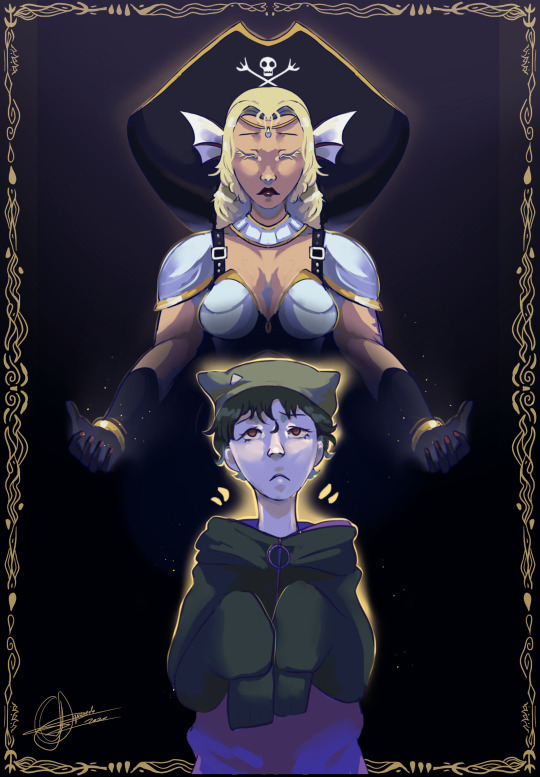
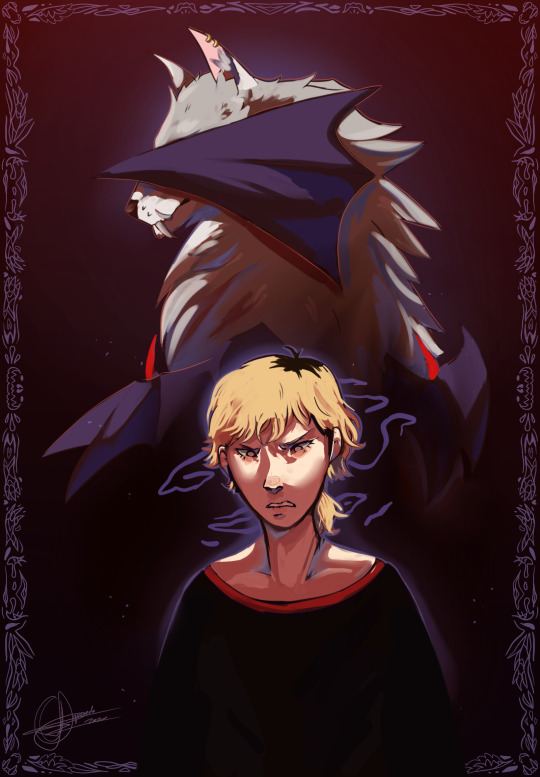

digimon survive: HARMONIOUS
speedpaints: (x)
#poli's art#this was my first ending and it shattered me#i love how sakuyamon is a he/him in here though!!!#digimon#digimon survive#kaito#shinonome kaito#miu shinonome#kaito shinonome#shinonome miu#sakuyamon#mermaimon#sangloupmon#dracmon#renamon#syakomon#digimon survive harmonious#agumon#labromon#kunemon#falcomon#lopmon#floramon#gabumon
138 notes
·
View notes
Text

siblinghood
a redraw of a past fanart from last year. fun fact: I watched a local musical the other day and felt inspired by the lighting direction.
72 notes
·
View notes
Text
Clearing up my phone and found these. Something something about the ability to show kindness to everyone but ourselves.
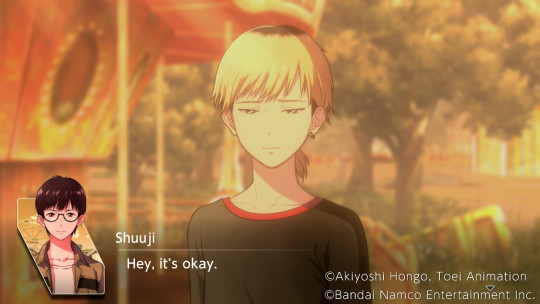
Time stamp on this says 2022 - it's when Kaito was feeling like he was a bad older brother.
And then 2024, I replayed the game for like an hour just to find this line bc I know Shuuji says it to Takuma as well.

Bro can't read the room but the first thing he does is try to reassure them.
One of my favourite things in media is when a character describes another character. And a few times in the game Takuma (and I think Aoi??) describes him as kind, patient, etc can't remember the exact words.
Obv that kindness rapidly dwindles during the game but IT'S STILL THERE all tattered and in pieces.
And then when Takuma post part 5 looks at him being soft and making GOOD DECISIONS and effectively says "that's the Shuuji I remember" I'm crying on my knees
TLDR; I was actively looking for moments like these bc I was like 'the soft spoken boy we met earlier in the game is disappearing' and then he'd say stuff like this.
#kayama shuuji#digimon survive#digimon#shinonome kaito#Momozuka takuma#media analysis#character analysis#You can't even call this analyzing#I just do research so I can write my 20000+ word fanfic that I'll never post
12 notes
·
View notes
Text
Ocean Wave, Part 2: A Winding Current
“I was curious.” Dracmon fidgets idly with the little golden loop near the spike on his right wing. “Somethin’ about you drew me in… and I couldn’t walk away. When we fought together, it felt right. More right than anything I’ve ever, ever felt. And now… I just want to be with you.” Dracmon wasn't always by Kaito's side. Which begs the question: part 1 - footprints in the sand Who was he, before the arrival of his other half? part 2 - a winding current And what was he doing, on that fateful day?
Part 2 covers the moment that Dracmon and Kaito met for the first time. once again, tumblr dot shit hides posts with external links in tags, so the ao3 link is in the source.
EDIT: fixed formatting on ao3 - indentation on mobile should look better now. extended authors notes under cut!
SO there was a TON of ideas that went into part 2, mostly stemming from, as i've mentioned, me being mad that kaito and dracmon were the only ones not to get a fancy champion evo sequence on-screen. i said in my authors note on ao3 that as i was playing, i just assumed it happened off-screen, but then i asked myself "what if it didnt?" and the answer i came up with was "maybe dracmon could already innately reach champion" and then i worked backwards from there.
next - aesthetic changes to dracmon. i am a HUGE sucker for digimon being matchies with their partner. before dracmon met kaito, i think all of his eyes were red, both the ones on his face and the ones on his hands, and the ones that are green only became that way after meeting kaito and devolving from sangloupmon. it's kind of like in tamers when beelzemon's eyes change colour after he makes amends with his partners. i also made changes to the accessory situation - after meeting kaito, instead of the little chain with the green gem in the middle, dracmon would have piercings on his wingtips that are the same shape and on the same side as kaito's. i have like... a written list of all aesthetic changes across all stages for all the partner digimon at this point (except for renamon and gabumon - still thinking about those ones) so i will accept any invitation to blabber about them! i LOVE that shit, i cannot emphasize that enough!!
formatting this time was a little less intense - i only had one table i needed to work with, and tbh, most of my formatting issues were about indentation. im actually not really a fan of the standard ao3 formatting patterns, where there's double spacing after each paragraph and no indentation. i much much prefer how it is in most novels, where there's no double spacing and every paragraph is indented. i know people tend to be fussy about formatting in fics, and most of the ones ive seen use the double-spacing no-indenting situation. it's understandable, formatting is something i'm fussy about as well, so im trying to strike a balance between the way i like it and the way i've noticed that most others like it.
i like indenting. i use it to like... give a sense of flow to conversations and/or differentiate/shift between spoken word and narration. the vibe im trying to give when i increase indentation from line to line is that the conversation speed is picking up. im not sure how well that was conveyed, but i think it works all right.
once again, like in alligators, i left some deliberate loose ends. the most obvious one is "if that first tether pulling dracmon toward the ocean wasn't kaito, then what was it?" and listen. dont even worry about it (:
as im replaying the game, im noticing some really interesting stuff about the state of the digital world. in like...part 7, i think, there's an optional free time event where you can recruit a tentomon, and it mentions that a lot of other digimon have been behaving aggressively lately. paired with the fog, i think that what's happening is that the shrinking digital world is causing a lot of digimon to have to live in close quarters, and that a lot of them are "young" in the sense that they're still feral and incapable of speech or reason. that, plus the continuous spread of the fog, would make for a really hostile environment for the remaining areas of the world. im quite happy with the theory i've got that digimon might sometimes lose a bit of memory every time they regenerate. if you subscribe to that idea, the unusual aggression among the wild digimon makes a lot of sense - they're all young, they all keep getting exploded and forgetting what's going on, theres this terrifying fucking fog EVERYWHERE, which just feeds back into wild digimon being more on-edge, and therefore more aggressive. thats why tsumemon is a little unsure of hanging out with koromon at first in part 1 - it's a dangerous world for little guys!
this is kinda connected to why i have the digimon half of the cast crossing paths with one another. tsumemon and koromon have met, yeah, (even though they don't remember anymore) but also i think a few of the other characters have met too. i didn't linger on it, but kunemon was in part one of ocean wave , albeit very briefly, trying to warn dracmon about seadramon lol. Now Why Would He Do That? again. don't worry about it (:
and at last - what's next? i mentioned in another text post a few days ago that ideally id like to go back to some shuuji and lopmon stuff. ocean wave set up some context about a couple of things i want to explore about shuuji and lopmon's relationship, as well as some . hmm. alternate events. and what effect those alternate events have on the two of them. "what do you mean" dont worry (: mostly it is just me self-indulgently fixing a few gripes i had with truthful route's part 6. i'd also at some point like to post some doodles of aesthetic changes. i have a few sketched out but they're very messy lol
anyway wow this was a big ol comment post. thanks for reading this far !!
4 notes
·
View notes
Text

i'm collapsing with my one secret
#project sekai#prosekai#prjsk#prsk#niigo#nightcord#25ji#n25#25 ji nightcord de#nightcord at 25:00#kanade yoisaki#mafuyu asahina#ena shinonome#mizuki akiyama#kaito#niigo kaito#my art#IM INSANEEEEEEEEE#THIS EVENT WAS CRAZYYYYYY#IT SCARED ME SO BAD#glad to finally be here to witness a monumental event i think the last time for me was immiscible discord#anyways cant wait for ena5.............
3K notes
·
View notes
Text

ena5
4K notes
·
View notes
Text

#star's thoughts#project sekai#pjsk#prsk#mizuki akiyama#akiyama mizuki#ena shinonome#shinonome ena#kaito vocaloid#meiko vocaloid#mafuyu asahina#asahina mafuyu#mizu5#mizuki5#mizu5 spoilers#mizuki5 spoilers#where does the path of thorns go?#where does the path of thorns lead to?#1k
1K notes
·
View notes
Text

happy pride month everyone

#project sekai#prsk#akito shinonome#toya aoyagi#aoyagi toya#shinonome akito#kohane azusawa#azusawa kohane#an shiraishi#shiraishi an#KAITO#vivid bad squad#i miss these dorks sm#art of fbi's
3K notes
·
View notes
Text








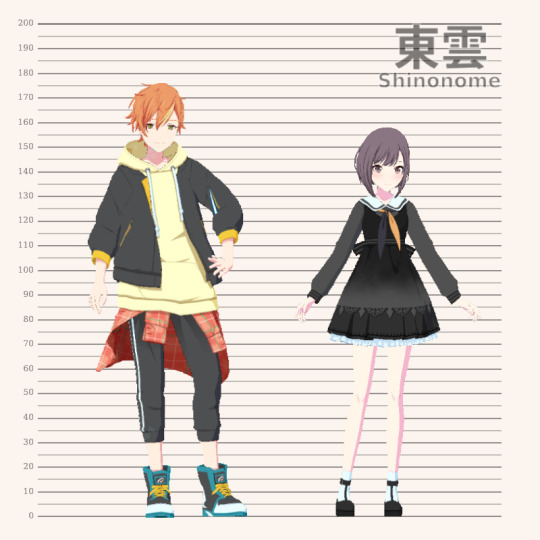

i haven't been able to find a good comprehensive project sekai height chart, so i made my own. used screenshots of the 3DMV models since a lot of the official renders are in weird positions for measuring
#project sekai#pjsk#vocaloid#hatsune miku#kagamine rin#kagamine len#megurine luka#meiko vocaloid#kaito vocaloid#ichika hoshino#saki tenma#honami mochizuki#shiho hinomori#minori hanasato#haruka kiritani#airi momoi#shizuku hinomori#kohane azusawa#an shiraishi#akito shinonome#toya aoyagi#tsukasa tenma#emu otori#nene kusanagi#rui kamishiro#kanade yoisaki#mafuyu asahina#ena shinonome#mizuki akiyama#sorry for the tag spam just wanna cover all my bases
2K notes
·
View notes
Text
4th anniversary celebration art!!
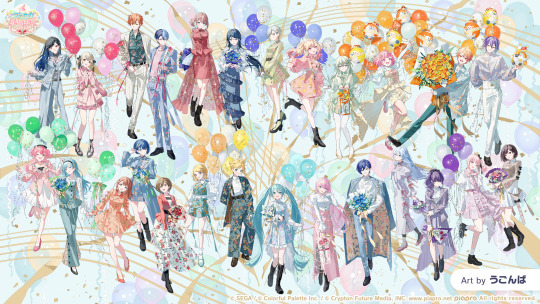



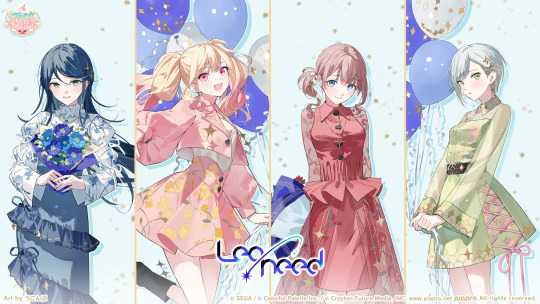


#project sekai#virtual singer#vivid bad squad#more more jump#leo/need#wonderland x showtime#25 ji nightcord de#hatsune miku#kagamine rin#kagamine len#megurine luka#meiko#kaito#kohane azusawa#an shiraishi#akito shinonome#toya aoyagi#minori hanasato#haruka kiritani#airi momoi#shizuku hinomori#ichika hoshino#saki tenma#honami mochizuki#shiho hinomori#tsukasa tenma#emu otori#nene kusanagi#rui kamishiro#kanade yoisaki
1K notes
·
View notes
Text
Digimon Survive Week 2024
Day 2: Cooperation
Dracmon looks up at him from the floor, big eyes full of sorrow. "You can't just be angry anymore Kaito. Look where your anger leads you." The defeat stings worse than the bruises on his knuckles. Losing over and over and over even when he wins the fight. "I don't know what else I can be."
or - things have gone horribly wrong and in typical Shinonome sibling fashion, Kaito and Miu are beating themselves up over it
@surviveweek
I am once again writing about this one particular scene. I've posted the first part for Survive Week last year. These are meant to be excerpts from my longer fic but I can’t help it.
#digimon survive#digimon survive week#survive week 2024#shinonome kaito#shinonome miu#dracmon#kayama shuuji#minase akiharu#minase miyuki
15 notes
·
View notes
Text



where does the path of thorns go?
inspo from cobaltpegasi, rb + credit if using. renders used from @milaxan7
#⚘️ | self indulgent#eyestrain#prsk#prosekai#pjsk#project sekai#mizuki akiyama#akiyama mizuki#shinonome ena#ena shinonome#pjsk kaito#pjsk meiko
671 notes
·
View notes
Text
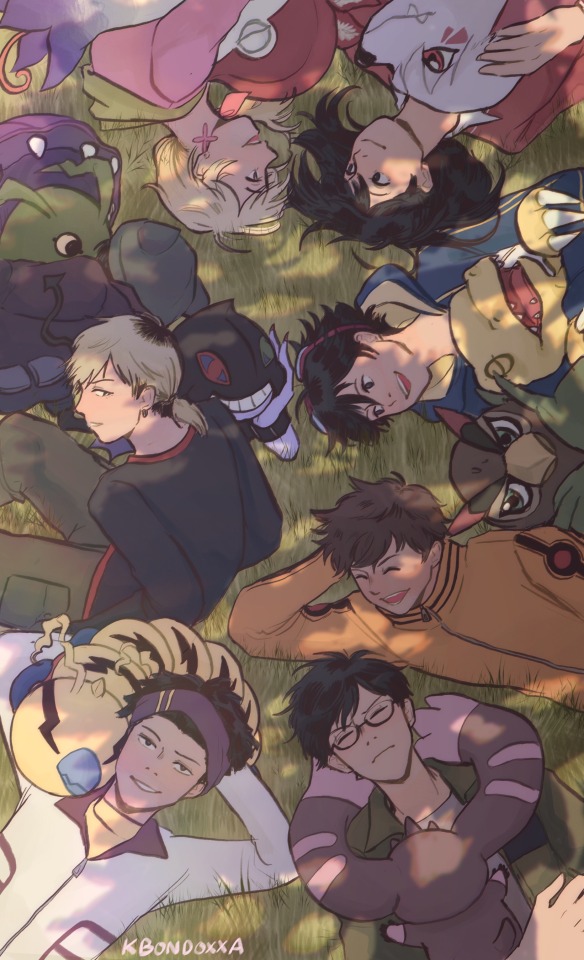
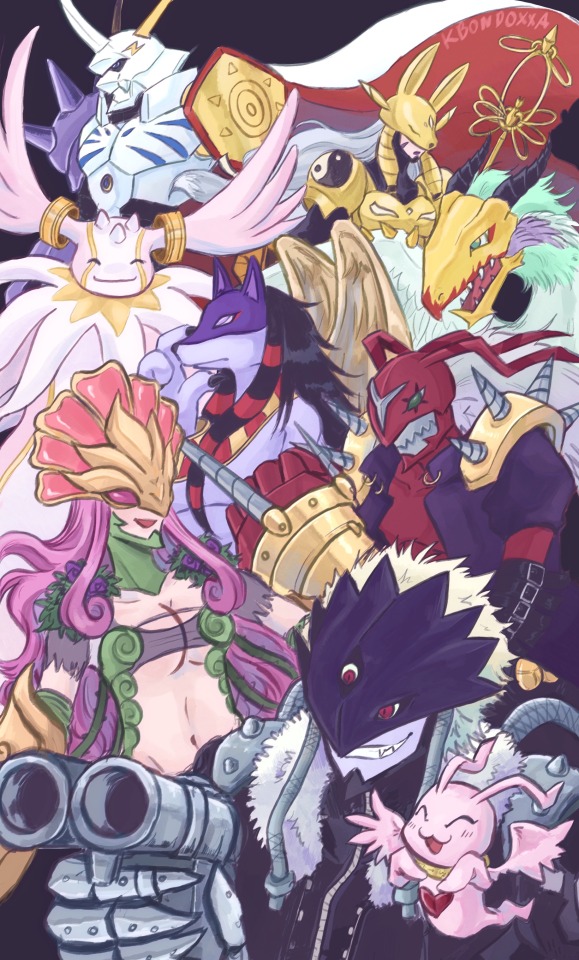
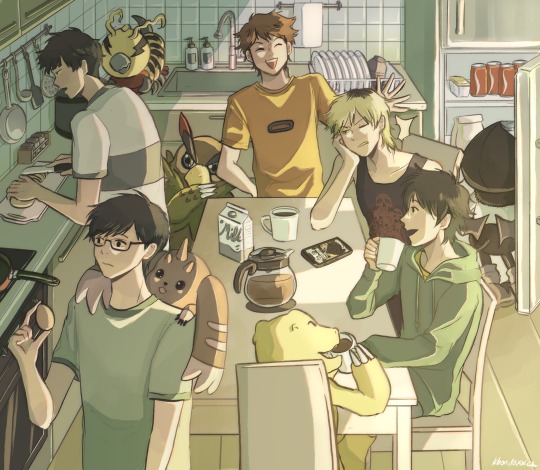

happy 2nd anniversary digimon survive! i’m sorry for no new survive artwork so i reposted my fave survive pieces ive done
#digimon#digimon survive#takuma momozuka#agumon#minoru hinata#falcomon#aoi shibuya#labramon#ryo tominaga#kunemon#saki kimishima#floramon#shuuji kayama#lopmon#kaito shinonome#dracmon#miu shinonome#syakomon
758 notes
·
View notes
Text
Miu and Shuuji Parallels
Originally posted to Twitter - I guess this is the extended edition.
Well… I told myself I cant write think pieces but if I'm gonna think this much, I might as well put it on tumblr 🤣
In short:
Oldest & youngest of main cast
Younger siblings to older brothers
Leaves home to prove they can make it on their own
And then there's:
Self blame
Loss of identity
Anger in place of grief
But mostly when Shuuji defends his brother, Miu is the only one who GETS IT.
Younger siblings to older brothers
They’re both youngest siblings that don't always get along with their older brother. But the difference is in how they clash. First time we meet Kaito, his description of her is already so far off from the Miu we see at the start. Small, timid and scared is how he sees her. Already, there is a clash of ideals on who she is and who she wants to be vs how Kaito sees her and how he's projecting that image onto her. This leads to some pretty explosive fights between the two, as Miu refuses to mold herself according to how Kaito wants her to behave. Even if it's for her own protection. Whereas Shuuji tries to mold himself into whatever his dad wants him to be. Even to his own detriment.
With the brothers, we never meet the older Kayama but Shuuji first mentions him at the amusement park in line with how we reunite the in-game siblings. In the conversation, he tries to reassure Kaito that not being able to know what Miu is thinking at all times does not mean he is lacking as an older brother. He's speaking from the perspective of the younger who holds his brother in high regard despite telling us they don't get along.
It's no secret that Miu is bothered by Kaito’s behaviour and is not afraid to call him out on it. Kaito of course is openly upset to which Shuuji says he's jealous that Miu and Kaito have this kind of relationship. We learn that he and his brother don't even fight since his brother doesn't 'stoop that low'. Where the Shinonome siblings clash, for the brothers there is simply nothing there (in terms of airing out and fixing your problems).
Living in a household where siblinghood is treated like a competition rather than a source of support, there is a distance caused by that 'competition'. Like he says to Agumon, it's not as simple as liking or disliking your sibling.
(Can I just say, I love Agumon's innocent yet intrusive questions. Takuma too, but he's a bit more passive and sometimes beats around the bush. Probably a learned human behaviour lol)
I don't know how to put it but that scene where he's telling Miu and Kaito to stop fighting and get along, and he gets told that is how they get along kinda made me sad. He's never had a proper fight with his older brother so they've never had their problems laid out in the open. By now, the game hints at a sibling rivalry fueled by the feelings he holds for his dad which in game calls a 'complicated relationship'. Any visible fighting is probably stopped because it's bothersome. No one else seems bothered by the Shinonome sibling rivalry and Shuuji's genuine confusion at how this is allowed, and deemed ok shows that being silenced is the norm in the Kayama household, and not talking about your problems is 'getting along'.
Leaves home to prove they can make it on their own
Kaito tries to protect Miu by threatening anything that might hurt her with physical violence. Telling her to 'get behind me' a couple times in the game. Shuuji's brother takes on the tasks their dad demands of Shuuji (whether or not this is to protect him or shut him up, I don't know. It feels like both). They might be well meaning, but this leaves Miu and Shuuji are incapable and can't be trusted to do anything on their own. That they're weak and lacking.
For Miu, it causes her to avoid her brother. To get away from his ‘helicopter parenting’. We first see her I'm the prologue having run away from home. A straw doll taking her place in bed. Clearly she's been planning this for a while.
Side Note: I want to point out that Kaito is dealing with their parent’s perceived betrayal. I don’t remember if they talk much about their life before the incident but it could be that they had a relatively normal life - one their parents are willing to put on a facade to keep that image of a normal happy family. (I don’t know if it’s intentional but even their family make up is father, mother, son, daughter - dynamics usually depicted as ‘normal families’ in children’s media). Whatever idyllic family life they might have had is shattered by an incident beyond their daughter's control. And what do they do? They move to a place where nobody knows what happened, where they can pretend it never even happened.
From Kaito’s perspective, this is not good enough (he's right) and he has had to step up. Is he being overprotective or just compensating for his parent’s lack of action? Anyway, he's trying to be a parent without knowing how to be a parent is what I'm saying.
For Shuuji, it's a bit more clear-cut as he does make mention of trying to prove himself a few times. In his prologue story, we get to see his motivations for joining the campers. He's there to prove himself capable.
Saki mentions that it's stifling to be so coddled and I'm sure she either says this to Kaito or about Kaito.
They attempt to gain independence from their brothers. Both want to be 'stronger', to prove that they can do things on their own w/o being coddled by their brothers.
This is technically part 1 as there's a next section that's a bit harder for me to post... I've written it, but since they're sensitive topics I find myself self-censoring a lot. And I cant post it as it is.
#digimon#digimon survive#Cypreus writes#shinonome miu#kayama shuuji#shinonome kaito#Posting this now because I've been writing a Kaito headcanon thing that kinda links to this
13 notes
·
View notes
Text
Illustration by @kana_gnpk

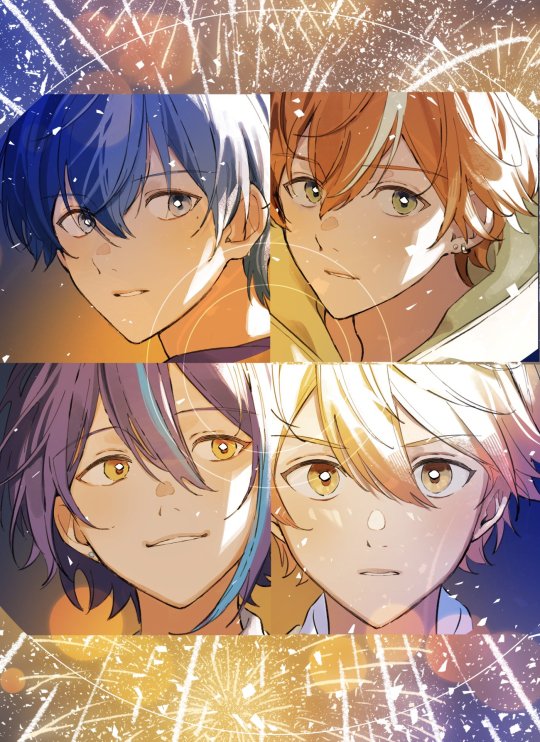
#project sekai#project sekai colorful stage#hatsune miku colorful stage#pjsk#vivid bad squad#wonderland x showtime#shinonome akito#akito shinonome#aoyagi toya#toya aoyagi#tenma tsukasa#tsukasa tenma#kamishiro rui#rui kamishiro#kagamine len#len kagamine#kaito#fantasista squad#akitoya#kailen#no I'm not tagging my least favorite ship out of respect#I don't ship kailen either#woops have fun with that 💔
250 notes
·
View notes